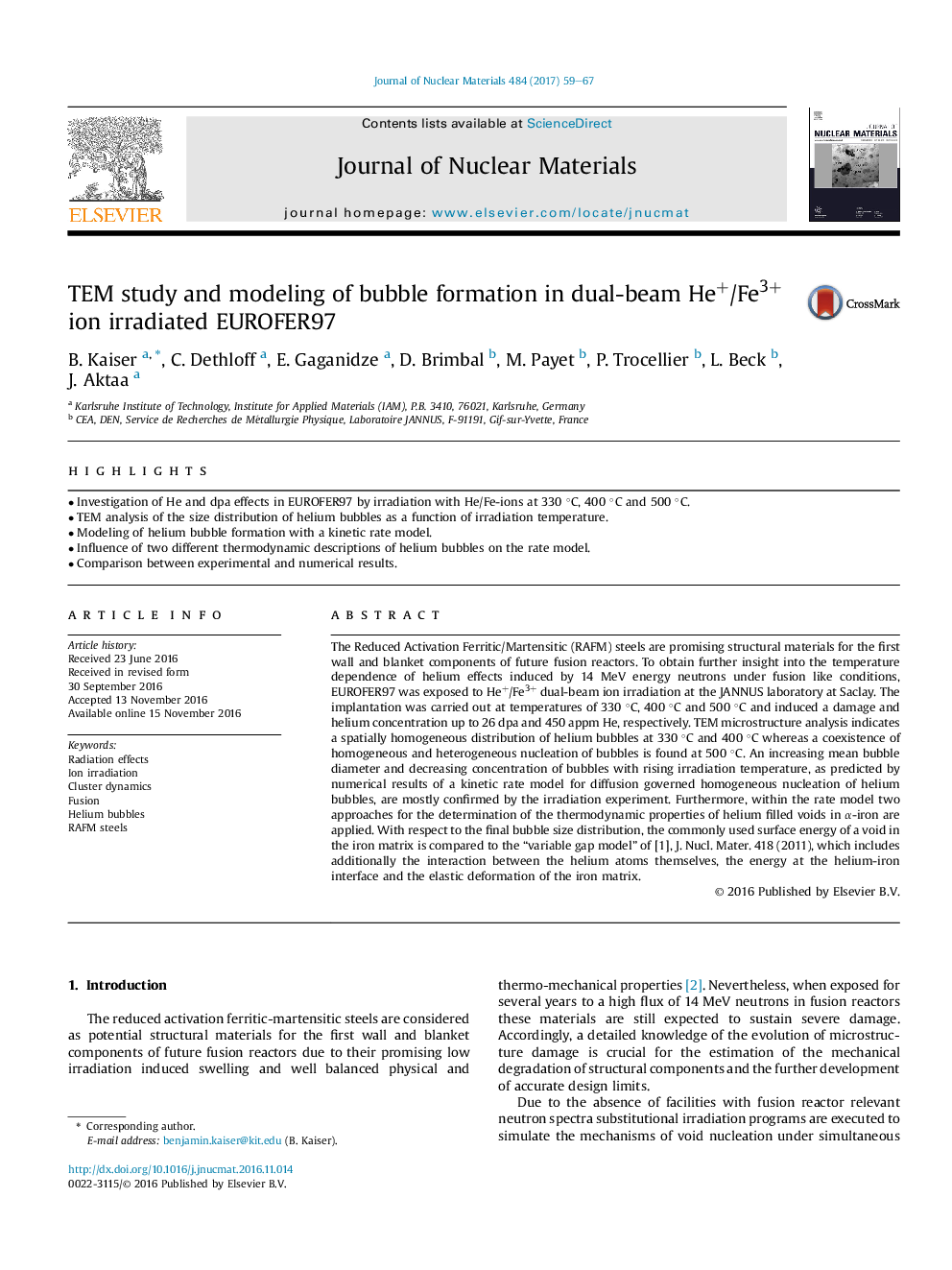| Article ID | Journal | Published Year | Pages | File Type |
|---|---|---|---|---|
| 5454409 | Journal of Nuclear Materials | 2017 | 9 Pages |
Abstract
The Reduced Activation Ferritic/Martensitic (RAFM) steels are promising structural materials for the first wall and blanket components of future fusion reactors. To obtain further insight into the temperature dependence of helium effects induced by 14 MeV energy neutrons under fusion like conditions, EUROFER97 was exposed to He+/Fe3+ dual-beam ion irradiation at the JANNUS laboratory at Saclay. The implantation was carried out at temperatures of 330 °C, 400 °C and 500 °C and induced a damage and helium concentration up to 26 dpa and 450 appm He, respectively. TEM microstructure analysis indicates a spatially homogeneous distribution of helium bubbles at 330 °C and 400 °C whereas a coexistence of homogeneous and heterogeneous nucleation of bubbles is found at 500 °C. An increasing mean bubble diameter and decreasing concentration of bubbles with rising irradiation temperature, as predicted by numerical results of a kinetic rate model for diffusion governed homogeneous nucleation of helium bubbles, are mostly confirmed by the irradiation experiment. Furthermore, within the rate model two approaches for the determination of the thermodynamic properties of helium filled voids in α-iron are applied. With respect to the final bubble size distribution, the commonly used surface energy of a void in the iron matrix is compared to the “variable gap model” of [1], J. Nucl. Mater. 418 (2011), which includes additionally the interaction between the helium atoms themselves, the energy at the helium-iron interface and the elastic deformation of the iron matrix.
Related Topics
Physical Sciences and Engineering
Energy
Nuclear Energy and Engineering
Authors
B. Kaiser, C. Dethloff, E. Gaganidze, D. Brimbal, M. Payet, P. Trocellier, L. Beck, J. Aktaa,
